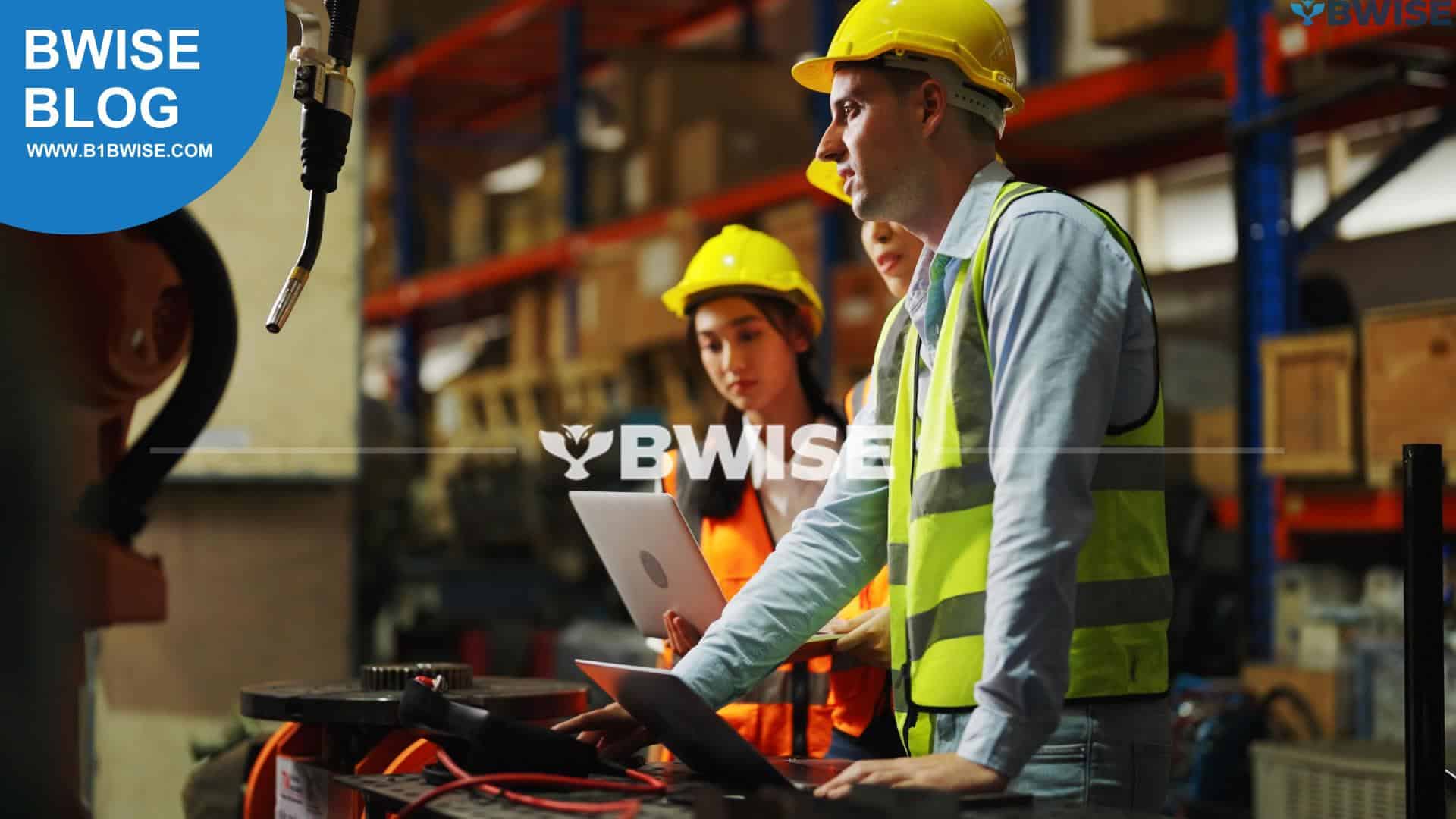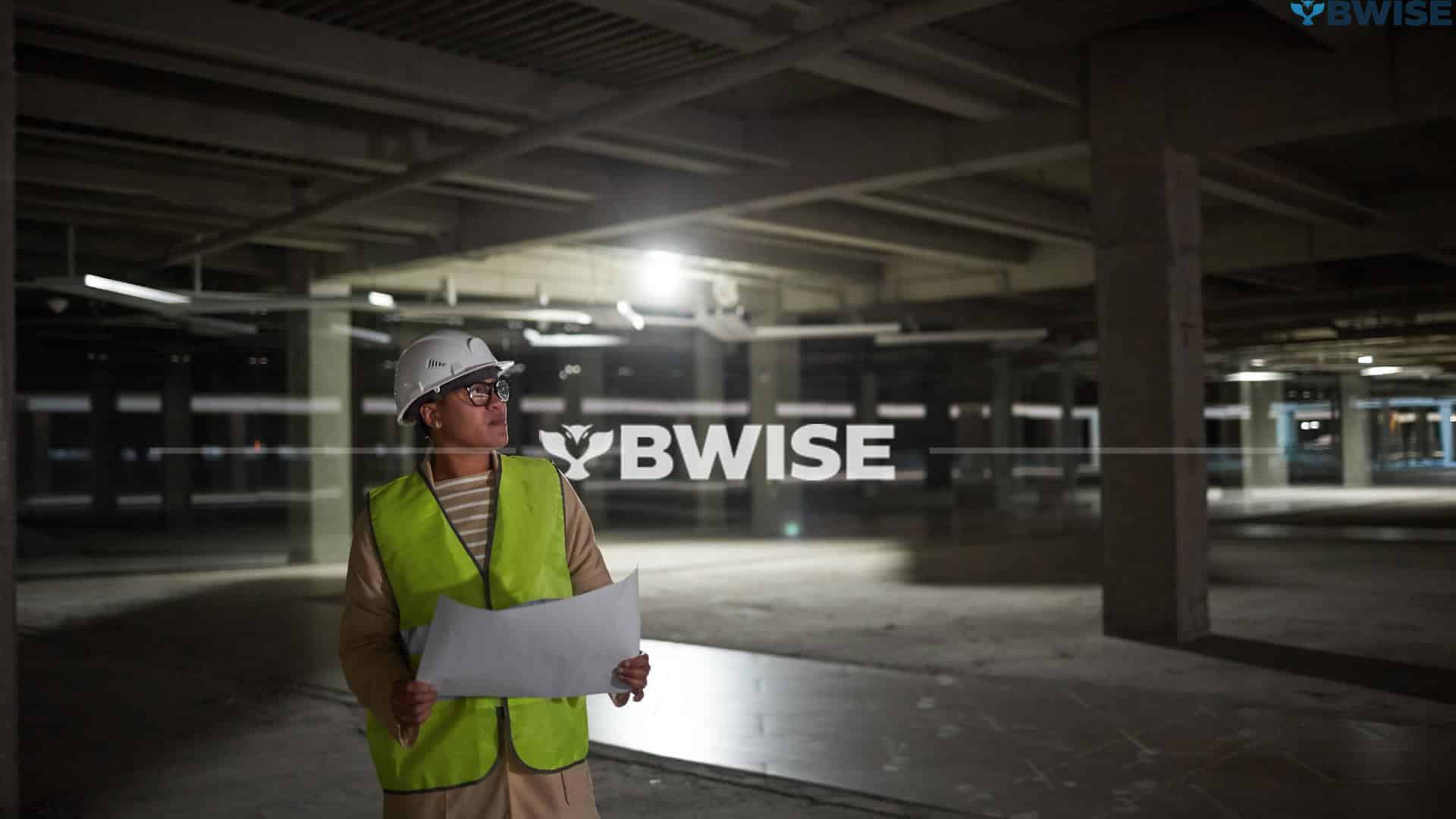We live in a rapidly changing manufacturing world. Planning resources effectively is vital. Manufacturing Resource Planning (MRP) is a real game-changer. It assists manufacturers in overseeing production, inventory, and supply chains. This fresh approach is poised to reshape the manufacturing sphere, boosting profits and efficiency.

MRP’s heart comprises various production stages. It moves from organizing materials to directing the workshop floor, handling the entire enterprise. MRP employs data for savvy decision-making, aiding producers to allocate resources intelligently for worldwide competitiveness.
MRP is a game changer for manufacturers, no matter their size. It unlocks new potential, enhancing production modes and paving the way for your business’s triumph. Let’s dig into MRP, its expansion, and the problems it resolves. This will illustrate its importance for the future of making things.
Key Takeaways
- Manufacturing Resource Planning (MRP) revolutionizes resource planning in the manufacturing industry.
- MRP integrates various manufacturing processes, enabling data-driven decision-making and operational efficiency.
- MRP helps manufacturers streamline production scheduling, inventory management, and supply chain optimization.
- The implementation of MRP can unlock new levels of profitability and responsiveness in the manufacturing sector.
- Understanding the evolution and key benefits of MRP is crucial for manufacturers seeking to stay competitive in the global market.
What is Manufacturing Resource Planning (MRP)?
Creating products needs a careful plan. This is where Manufacturing Resource Planning (MRP) comes in. It’s a great tool to manage how many items you make and what you have in your storehouse. It makes sure you always have enough goods and that you get your supplies when you need them.
The main parts of MRP are:
- Material Requirements Planning (MRP): This part figures out how much and when to get raw materials and parts needed for making products.
- Inventory Management: MRP helps keep the right amount of stock by balancing what’s needed and what’s available, avoiding too much or too little.
- Production Planning: It helps make detailed plans for making products, making sure resources are used well and on time to meet customer needs.
MRP ties the critical elements together. It gives businesses the edge to effectively oversee their production activities. This turbocharges their planning for resources, material needs, storage management, and crafting agendas.
MRP has brought significant transformations to numerous manufacturers. It’s skyrocketed their efficiency, slashed expenses, and boosted customer satisfaction. How? By improving the way they handle inventory and plan their production.
The Evolution of MRP: From Traditional to Advanced
The evolution of manufacturing resource planning (MRP) has been significant. What began as a basic management tool for materials is now a comprehensive method for tackling production. Modern technology and current factory requirements stimulated this transformation.
Initially, material requirement planning (MRP) systems were all about scheduling and stock. They were complex and involved much manual effort. However, improved technology changed these systems. Today’s MRP systems are highly integrated and automated, capable of managing real-time data and rapid decision-making.
In the ’90s, business planning took a leap with the introduction of ERP systems. These systems incorporated MRP, tying it with finance, HR, and supply chains. Today, this integrated method is a standard feature in contemporary factories.
Manufacturing execution systems (MES) have helped MRP grow. MES provides a real-time view of the production area, assisting in better control and enhancement. Joining MRP and MES together can make factories function more smoothly, reduce wastage, and increase efficiency.
Modern lean manufacturing has influenced MRP too. Ideas from lean methodology such as just-in-time production and continuous improvement mesh well with MRP. This combination allows factories to hold less inventory, utilize resources more efficiently, and respond to market demands promptly.
The realm of production is always evolving, and so is MRP. It has transitioned from basic resource planning to sophisticated interconnected systems. This has transformed the approach factories adopt for resource allocation and planning.

Key Challenges Addressed by Manufacturing Resource Planning
Okay, so listen. Crafting things can be tough. But there’s this tool, MRP. It’s a big help. Ever dealt with things like slow production, tangled supply chains, or confusing stock inventory? MRP jumps in. It solves these problems, ensuring a hassle-free experience from beginning to end.
MRP faces a big challenge–production scheduling. It predicts demand accurately and controls inventory amounts. This makes sure manufacturing schedules align with what the customers want, cutting idle time and enhancing productivity. As a result, it’s easier to plan capacity and adapt swiftly to shifts in the market.
MRP tackles inventory management puzzles, weaving together info from various sources: suppliers, delivery pros, and more. It predicts roadblocks, keeping goods moving. No delays, no shortages. Inventory gets a boost, and cost of storage drops.
- Enhances production scheduling and capacity planning
- Optimizes supply chain visibility and coordination
- Improves inventory management and reduces carrying costs
- Enables faster response to changing market demands
In facing these hurdles, MRP aids factories in smoothing out their workings. It boosts efficiency and allows them to keep up the pace worldwide.
Integrating MRP with Other Manufacturing Systems
We live in a speedy world of production. Winning the game relies on seamless system linkage. When tied with other crucial systems, manufacturing resource planning (MRP) stands out. We’re talking about systems like enterprise resource planning (ERP) and manufacturing execution systems (MES).
When MRP and ERP join, they present a thorough look at how production works. It showcases steps from planning, purchasing, manufacturing, to delivery. This link improves decision-making, optimizes resource use, reduces delay, and heightens productivity.
Plus, pairing MRP and MES systems boosts shop floor control. MES provides detailed production, equipment, and quality data. This data aids in making swift, precise alterations to production plans, ensuring the shop floor aligns with the company’s objectives.
Integrating MRP with other systems also unlocks the power of data analytics. This lets manufacturers find new ways to improve and make smart choices. It keeps them flexible, quick to adapt, and competitive in a changing market.
Wrapping it up, connecting MRP to major systems is key for maximum use. It paves the way for improved team work, decisions rooted in facts, and streamlined workflows. Thanks to this fusion, manufacturers can manage production hurdles of the present and keep a step ahead.
The Role of Manufacturing Resource Planning in Supply Chain Optimization
Managing resources in manufacturing (MRP) hugely improves managing a supply chain. It offers live info on stock, products being made, and what consumers want. So, firms can run their supply chains smoother.
MRP makes inventory control better by keeping an eye on supply levels. It steps in and orders more when supplies dip low, preventing shortages and unnecessary expenses. Such a method eases the way we manage inventory.
MRP improves demand forecasting. This assists businesses in organizing production, collaborating with suppliers, and handling logistics. It makes sure products are at the right place at the right time.
Additionally, MRP strengthens connections with suppliers by openness about production and inventory strategy. This clarity allows suppliers to coordinate their plans, enhancing the supply process. It further reduces wait times.
When MRP is connected with different systems, companies can see the whole supply chain. This connection makes things run better, lowers waste, and strengthens resilience. It helps in increasing efficiency and earning more profit.
Lean Manufacturing and MRP: A Powerful Combination
Combining manufacturing resource planning (MRP) with lean manufacturing creates a powerful approach for enhanced production. It increases effectiveness, reduces unnecessary elements, and promotes continuous improvement.
MRP creates a roadmap to handle resources better. It gets more effective when combined with lean, such as on-demand manufacturing and reducing waste, making procedures more straightforward and eliminating needless parts.
This package gives improved guidance in managing the manufacturing stages. MRP monitors materials, workers, and gear. Its role is linking production to needs and ensuring stockpiles stay minimal. It cuts down on waste and expense.
MRP data aids in enhancing operations. It pinpoints areas for growth, streamlining workflow, and maximizing resource usage. This partnership of MRP and lean foster an environment of constant growth. It enables businesses to keep pace, and readily adapt to fluctuating market trends.
When we mesh together ideas from manufacturing resource planning and lean manufacturing, businesses can see remarkable accomplishments. They can be more productive, limit waste, and stand out in the highly competitive milieu of manufacturing.
Emerging Trends in Manufacturing Resource Planning
Manufacturing resource planning (MRP) isn’t what it used to be. It’s rapidly evolving. Innovations like Industry 4.0, cloud technology, artificial intelligence, and Internet of Things (IoT) are at the forefront. These shift the way businesses strategize and manage their resources.
Cloud tech is growing within MRP systems, giving manufacturers access to live data. This simplifies operations and boosts teamwork. It helps businesses adapt, expand and stay safe, keeping them in pace with market trends.
AI and machine learning are making waves. They aid in improved data examination, foresight of potential failures, and smarter decision making. AI enables businesses to handle their inventory effectively, project demand with precision, and automate chores. This results in increased productivity and money saved.
The use of The Internet of Things (IoT) in MRP has increased. IoT gadgets and sensors gather data from production areas. It provides businesses with insights into manufacturing, supply chains, and asset management. This data aids in making informed decisions, responding to market shifts quickly, and continuous improvement.
In the continually evolving manufacturing landscape, MRP’s contribution to Industry 4.0 and digital transformation is vital. Embracing these fresh trends allows manufacturers to streamline their processes, outpace rivals, and ensure future success.

Best Practices for Successful MRP Implementation
Beginning with manufacturing resource planning (MRP) can greatly benefit a business. However, it requires a deliberate and thoughtful strategy. Here are essential steps to ensure your MRP runs smoothly:
- Robust Change Management: A good change plan is key for MRP success. It means talking to everyone involved, sharing the good stuff, and training workers well. This helps everyone adjust smoothly.
- Prioritize Data Quality: MRP needs clean, current data to work right. Companies should focus on keeping their data accurate. This is crucial for the system’s success.
- Comprehensive Employee Training: It’s important to train all staff who will use the MRP system. This ensures they know how to use it well. It also helps them get the most out of it.
- Continuous Improvement: MRP is not just a start-up; it’s an ongoing effort. Companies should always check their system, find ways to get better, and make those changes. This keeps the system working well.
Following these best practices helps companies have a successful MRP start. It lets them use their MRP to its fullest and keep improving their work.
Conclusion
Exploring manufacturing resource planning (MRP) has been enlightening. But it’s more than a productive enhancer. It’s a pivotal tool helping firms improve supply chains, wisely operate resources, and stay current with industrial shifts.
The achievement of MRP is because it shows the whole picture of production. It links information from various sources, guiding executives to make wise choices. Hence, MRP becomes vital in streamlined manufacturing. It leads to reduced expenses, quicker delivery rates, and content customers.
In the future, MRP’s part will become even bigger. As Industry 4.0 and upcoming tech evolve, MRP systems need to match pace. Adopting artificial intelligence, machine learning, and instantaneous data is critical. In this way, manufacturers can boost productivity, gain flexibility, and maintain a competitive edge in a rapidly shifting market scene. For more information about BWISE, feel free to schedule a demo. Remember B1 – BWISE
